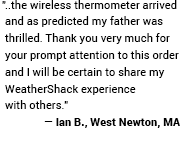
How Do Atomic Clocks Work
The Technology Behind Atomic Clocks The radio controlled clocks (atomic clocks) sold in North America are permanently tuned to receive and synchronize with the National Institute of Standards and Technology atomic clock radio station WWVB in Boulder, Colorado. WWVB uses a high transmitter power (50,000 watts), an extremely efficient antenna, and broadcasts on a low frequency of 60 kHz. For comparison, FM radio and television broadcasters use frequencies thousands of times higher. Probably the lowest frequency a radio in your house can receive is 530 kHz, at the very bottom of the AM broadcast band. Even that frequency is nearly 10 times higher than the WWVB atomic clock signal. The combination of high power and low frequency allows the atomic clock synchronization signal from WWVB to propagate or "bounce" over a wide area, providing reception throughout the continental United States plus much of Canada, Mexico, and Central America. Visit the WWWB signal coverage area page to learn more. At a frequency of 60 kHz, there isn't enough room (bandwidth) to carry any type of audio information in the radio signal, so the atomic clock time code from WWVB is sent in Binary Coded Decimal (BCD), a series of binary digits or "bits" having only two possible values (0 or 1). The time code is transmitted using 53 bits and 7 separators, and sent at a very slow rate of 1 bit per second. It takes 60 seconds to send a complete time code, which includes seconds, minutes, hours, day of the year and year, along with information about daylight savings time and leap years. For comparison, a typical computer telephone modem transmits tens of thousands of bits per second! The atomic clock time code bits are generated at WWVB by raising and lowering the power of the 60 kHz signal. The signal is always being transmitted, but every second it is significantly reduced in power for a period of 0.2, 0.5, or 0.8 seconds.
|
WWVB broadcasts its atomic digital clock information using Coordinated Universal Time (UTC), the international time standard. It is the current term for what was once commonly referred to as Greenwich Mean Time (GMT). Zero hours UTC (0000) is midnight in Greenwich England, which lies on the zero longitudinal meridian. Consequently, when the atomic radio controlled clock has decoded the WWVB atomic digital clock signal, it will first apply a time zone correction based on the time zone the atomic clock is set to, and then synchronize itself to the information received from WWVB. While some users want their atomic clocks to display UTC (amateur radio operators, for example), most users prefer to display local time. Once the atomic radio controlled clock has been synchronized, it won’t decode the WWVB atomic digital clock signal again for awhile. Some radio controlled clocks only decode the signal once per day, others more often. Those that decode once per day usually do it at night, when the synchronization signal from WWVB is much stronger. Atomic clocks keep time between synchronization using their quartz crystal oscillators, typically accurate to within one second over several days. Since the atomic clock is updated at least once each day, any error would be measured in fractions of a second, and the display would still appear to be on the correct second. All content on the WeatherShack Education Center is Copyright 2002-2020 WeatherShack.com. This material may not be reproduced, displayed, modified or distributed without the express prior written permission of WeatherShack.com. For permission, please contact [email protected]. |
















